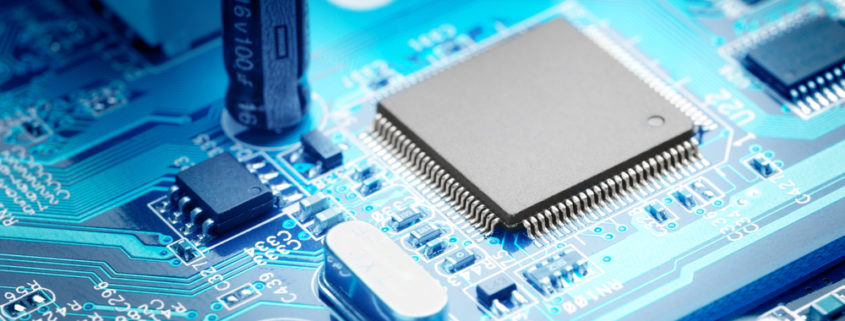The Development of System-on-a-Chip over the Years
System-on-a-chip continues to be an integral part of modern-day technology and products. The functionality of mobile devices, computers, automobiles, and others mainly rely on SOCs.
A Quick History
Back in the 1970s, SOCs were first developed for miniaturization; when the first LED wristwatch was announced. Back then, it took 44 Integrated Circuits (ICs) to be fused into one single chip.
The technology continued to grow when personal computing and cellular phone technology flourished in the 1990s. Later on, smaller chips were developed for other related functions such as LCD displays, audio, keyboard, and battery charging.
SOC technology has been used by fabless manufacturers. Its ability to integrate functionality into one chip-enabled SOC technology evolved from being the heart computers and smartphones to enabling full function and feature of portable ultrabooks.
Since then, major players in the industry have utilized System-on-a-chip technology to meet the diverse needs of each industry. SOCs are built to perform specific tasks and are power, cost, and performance-optimized. It is known to have the best performance to power ratio.
Recently, manufacturers developed programmable SOCs which integrate processor and FPGA architectures into one device. The processors in programmable SOCs can be “hard” or “soft”.
A programmable SOC with a hard processor is an FPGA (Field-Programmable Gate Array) with connections for a microprocessor for embedded on a chip, surrounded by programmable logic that you can use for custom applications.
Processors
A hard processor is optimized for power consumption and uses less space on the chip. Above all, a hard processor offers high CPU performance.
Soft processors in programmable SOCs are carried out through the use of on-chip resources and programmable logic routed onto FPGA. This type of programmable SOC can be reconfigured and offers flexibility when it comes to removing unnecessary functions in the future.
Both have their advantages and disadvantages when it comes to configurability, predictability, software tools, and speed. The soft processor’s configurability is high compared to the hard processor. For predictability, software tools, and speed, hard processor wins.
Programmable system-on-a-chip offers key advantages. First, FPGA runs at a lower frequency, thus lowers power consumption. Second, FPGA SOCs show better performance compared to best-in-class SOCs. Third, programmable SOCs can is embedded with FPGA fabric that can be programmed to address evolving specifications.
With this, changes can be made without costing too much. Lastly, it can be customized. FPSOCs offer OEM to customize the software and hardware. Whatever the user or the customer requires can be customized in the FPGA without affecting performance.
Options
A variety of options are now available for programmable SOCs, the hard processor, and soft processor. Each of these options has unique architecture and tools to optimize the device.
Embedding FPGA fabric on SOCs offers advantages and application performance benefits. Traditional SOCs may be replaced with programmable SOC devices that show better cost, power, and performance ratio.
With these benefits, more and more companies might start to embrace the full disruptive potential of programmable system-on-a-chip. Eventually, standalone SOCs will be replaced by programmable SOCs.
Linear MicroSystems, Inc. is proud to offer its services worldwide as well as the surrounding areas and cities around our Headquarters in Irvine, CA: Mission Viejo, Laguna Niguel, Huntington Beach, Santa Ana, Fountain Valley, Anaheim, Orange County, Fullerton, and Los Angeles.






